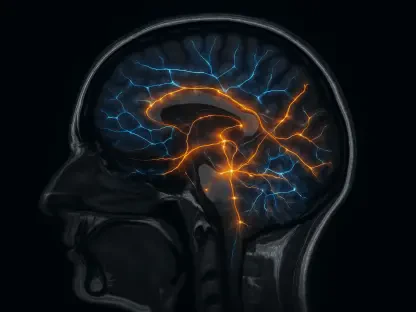The COVID-19 pandemic has had far-reaching effects on various aspects of health, including pelvic health. As the public health emergency (PHE) comes to an end, it is essential to understand how this transition might impact individuals dealing with pelvic floor dysfunction (PFD) and related conditions. This article delves into the potential changes and challenges that may arise, offering insights from medical professionals and real-life case studies.
The Impact of Trauma on Pelvic Health
Pelvic floor dysfunction (PFD) is a significant health issue that can stem from various forms of trauma, both physical and emotional. Symptoms of PFD include urinary incontinence, pain during intercourse, constipation, and urinary frequency and urgency. The end of the COVID-19 PHE may exacerbate these symptoms due to increased stress and reduced access to healthcare services. Trauma, whether from childhood, childbirth, or emotional experiences, can tighten pelvic floor muscles, leading to chronic conditions. The stress responses in the pelvic floor are particularly noteworthy, as they can cause long-term physical and emotional repercussions. Understanding the connection between trauma and pelvic health is crucial for effective management and treatment.
The pelvic floor is closely interconnected with the nervous system via the vagal nerves, impacting several bodily functions like digestion, heart rate, and the immune system. This interconnectedness means that trauma and stress can have widespread effects on overall health, making it essential to address both the physical and emotional aspects of pelvic floor dysfunction. When individuals experience trauma, the body responds in ways that may initially protect, but over time these responses can lead to chronic conditions. The end of the PHE might worsen situations for those already struggling with their pelvic health due to heightened stress levels and possible delays in seeking or receiving medical care.
Diagnostic Challenges and the Role of Mental Health
Diagnosing pelvic floor dysfunction can be challenging, as inflammation and stress effects are hard to capture via conventional medical imaging or blood tests. The end of the COVID-19 PHE may lead to further diagnostic delays due to reduced access to specialized healthcare services and increased patient load on healthcare systems. Mental health plays a critical role in the perpetuation and intensification of chronic pain conditions, particularly pelvic pain. The feedback loop between emotional distress and physical symptoms is a recurring theme in the management of PFD. Addressing mental health is essential for breaking this cycle and achieving long-term relief.
Comprehensive treatment approaches that include pelvic floor physical therapy, mental health counseling, and integrated strategies addressing both physical and emotional trauma are vital. These approaches can help manage chronic pelvic pain and improve overall quality of life for individuals affected by PFD. When emotional health is left out of the equation, it becomes significantly harder to effectively treat pelvic floor dysfunction. Healthcare providers must consider both the physical manifestations and the emotional triggers that may be causing or exacerbating pain. Individuals often find that when they focus on mental well-being alongside physical health, their overall state improves markedly.
The Importance of Specialized Training and Awareness
There is a significant deficit in specialized training among healthcare professionals in diagnosing and managing pelvic floor dysfunction and related chronic conditions. The end of the COVID-19 PHE may exacerbate this issue, as healthcare systems may struggle to provide adequate training and resources for specialized care. Societal taboos around discussing pelvic and sexual health contribute to delayed diagnosis and treatment. Raising awareness and promoting open conversations about pelvic health are essential for improving patient outcomes and reducing the stigma associated with these conditions.
Adopting a multidisciplinary approach that combines physical therapy with psychological counseling is crucial for managing chronic pelvic pain and its associated conditions. This holistic approach can help address the complex interplay between physical symptoms and emotional triggers, leading to more effective treatment and improved patient outcomes. The more healthcare professionals are educated about the intricacies of pelvic health, the better they can serve their patients. Reducing the stigma and encouraging open conversation can also empower patients to seek the help they need earlier, preventing long-term suffering.
Real-Life Case Studies: Lessons Learned
Zoe’s Story: Zoe, 48, suffered from undiagnosed chronic pelvic pain for a year, visiting nearly a dozen doctors without receiving a proper diagnosis. She felt dismissed and written off by the medical community until she started working with a pelvic floor physical therapist, who identified her condition as a hypertonic pelvic floor—a disorder characterized by overactive and tight pelvic muscles. In addition to physical therapy, counseling helped address her mental health, aiding significantly in her recovery. Zoe’s experience highlights the necessity of specialized and empathetic care in identifying and treating PFD effectively.
Dianna B.’s Experience: Dianna, 55, had severe pain years following a traumatic childbirth and unrecognized childhood traumatic experiences. Her symptoms persisted until therapy helped her uncover repressed memories and trauma, highlighting their longstanding physical manifestation in her pelvic floor pain. Dianna’s journey underscores the importance of addressing the emotional underpinnings of physical conditions. Meanwhile, Savannah T.’s Struggle demonstrates another dimension of dealing with pelvic health issues. Savannah, 25, diagnosed with endometriosis, experienced debilitating pain worsening during the pandemic. Despite her knowledge as a nurse, she reached a pivotal turning point through pelvic floor physical therapy combined with mental health support, demonstrating a significant improvement in her condition.
These case studies highlight the importance of comprehensive care that addresses both physical and emotional aspects of pelvic floor dysfunction. They underscore the need for specialized training, awareness, and a multidisciplinary approach to effectively manage these complex conditions. Each story represents a unique journey but shares common themes of perseverance, the need for understanding healthcare, and the vital role of mental well-being in physical health.
Moving Forward: Advocacy and Comprehensive Care
The COVID-19 pandemic has affected numerous aspects of healthcare, including pelvic health. As the public health emergency (PHE) ends, it’s crucial to understand how this transition might impact those dealing with pelvic floor dysfunction (PFD) and related conditions. With the conclusion of the PHE, changes in healthcare accessibility and resources may pose new challenges for individuals managing these issues.
The pandemic highlighted the importance of telehealth and remote consultations, which offered a lifeline for many patients unable to attend in-person appointments. As the PHE ends, there may be a shift back to more traditional healthcare delivery methods. However, the transition could limit access for those who have come to rely on virtual visits due to convenience or mobility issues.
Expert opinions and case studies shed light on the potential barriers that may arise. For example, some patients found that remote consultations during the pandemic allowed for more consistent care. Others, particularly those with severe PFD, faced difficulties in accessing necessary in-person treatments and therapies.
Healthcare providers will likely need to adapt by integrating both in-person and telehealth options to ensure continued support for those with pelvic health issues. Monitoring these changes and addressing emerging challenges will be key to maintaining effective care for PFD patients as we move beyond the COVID-19 public health emergency.









